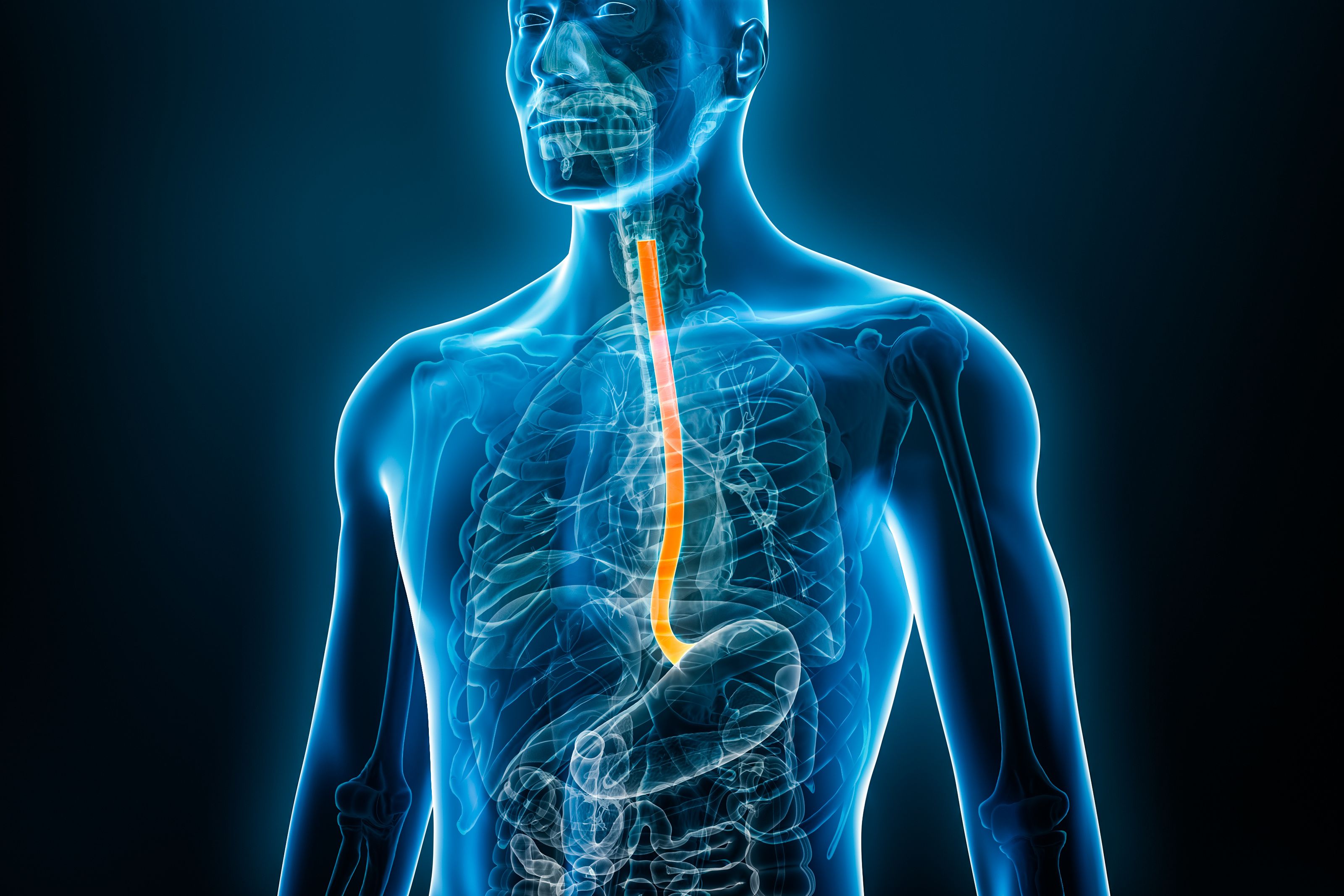Eohilia Approved by FDA to Treat Eosinophilic Esophagitis in Patients 11 Years of Age and Older
Two multicenter, randomized, double-blind, placebo-controlled clinical trials showed that 53.1% of patients administered Eohilia achieved histologic remission compared with 1% of patients administered placebo.
Image credit: Matthieu | stock.adobe.com.

The FDA has approved Takeda’s Eohilia (budesonide oral suspension) for the treatment of patients aged 11 years and older with eosinophilic esophagitis (EoE). The regulatory action makes Eohilia the first and only approved oral treatment for this patient population, with Takeda stating it expects Eohilia 2 mg/10 mL single-dose stick packs to be available by the end of February.1
“Various formulations of corticosteroids have been used in the past to manage EoE, but in an off-label capacity and using multiple delivery options. With Eohilia, it’s gratifying to now have an FDA-approved treatment specifically formulated for a consistent dose delivery with demonstrated ability to address esophageal inflammation and EoE dysphagia symptoms,” Ikuo Hirano, MD, professor of medicine and director of the Kenneth C. Griffin Esophageal Center in the Division of Gastroenterology and Hepatology at Northwestern University Feinberg School of Medicine, said in a press release. “As the treatment needs and goals of patients with EoE can vary, I welcome the flexibility that Eohilia offers as an oral medication.”1
An emerging inflammatory disease, EoE is frequently caused by acid reflux and is typically unresponsive to proton pump inhibitor therapy. The First International Gastrointestinal Eosinophil Research Symposium Subcommittee published the first consensus guideline on EoE in 2007. Approximately three-quarters of cases occur in white males, but diagnoses in adults and children have been on the rise over the past decade.2
If left untreated, the condition may cause esophageal narrowing. EoE is typically treated with steroids to control inflammation and suppress eosinophils. Long-term use of steroids for EoE has not been thoroughly researched. As such, biologic agents that specifically target the white blood cell itself are increasingly been investigated.2
Eohilia, a corticosteroid that was developed specifically to treat EoE, is comprised of a novel formulation of budesonide that confers thixotropic properties. Eohilia 2 mg is taken twice daily for 12 weeks in patients 11 years of age and older with EoE.1
The FDA based the approval on efficacy and safety findings from a pair of multicenter, randomized, double-blind, parallel-group, placebo-controlled 12-week trials, one of which was conducted in those aged 11 to 56 years (Study 1) and the second in those aged 11 to 42 years (Study 2). Across both trials, patients were randomly assigned to receive at least one oral dose of Eohilia 2 mg or placebo twice daily. The trial’s efficacy endpoints included histologic remission and absolute change from baseline in patient-reported Dysphagia Symptom Questionnaire (DSQ) combined score.
In Study 1, investigators found that 53.1% of patients administered Eohilia achieved histologic remission compared with 1% of those administered placebo; whereas in Study 2, 38% of patients administered Eohilia achieved histologic remission compared with 2.4% of patients administered placebo. For the endpoint of absolute change from baseline in DSQ, the score in the Eohilia cohort for Study 1 was -10.2 (1.5) compared with -6.5 (1.8) in the placebo cohort, while in Study 2, the score was -14.5 (1.8) with Eohilia compared with -5.9 (2.1) with placebo.
Across the last two weeks of each study, investigators observed that compared with placebo, more patients administered Eohilia did not experience dysphagia or only experienced dysphagia that “got better or cleared up on its own.”1
Notably, Eohilia was not found to be safe and effective treating EoE for longer than 12 weeks. The most common adverse events that occurred in ≥2% of patients administered Eohilia and at a rate greater than placebo across both studies were respiratory tract infection (13%), gastrointestinal mucosal candidiasis (8%), headache (5%), gastroenteritis (3%), throat irritation (3%), adrenal suppression (2%) and erosive esophagitis (2%).
“For most of us, eating is a simple experience. But for people living with eosinophilic esophagitis, sitting down for a meal can include painful and difficult swallowing, chest pain and a choking sensation,” Brandon Monk, Takeda senior vice president and head, US Gastroenterology Business Unit, said in a press release. “With Eohilia, patients and their physicians now have the first and only FDA-approved oral treatment option for EoE that was shown during two 12-week clinical studies to reduce esophageal inflammation and improve the ability to swallow.”1
References
1. FDA Approves Takeda’s EOHILIA (budesonide oral suspension), the First and Only Oral Treatment in the U.S. for Eosinophilic Esophagitis (EoE). Takeda. News release. February 12, 2024. Accessed February 12, 2024. https://www.takeda.com/newsroom/newsreleases/2024/fda-approves-eohilia/
2. Penn Medicine. Eosinophilic Esophagitis. Webpage. Accessed February 12, 2024. https://www.pennmedicine.org/for-patients-and-visitors/patient-information/conditions-treated-a-to-z/eosinophilic-esophagitis#:~:text=Eosinophilic%20esophagitis%20(EoE)%20is%20an,cases%20occur%20in%20white%20males.
FDA Fast Tracks Johnson & Johnson’s Nipocalimab for Fetal Neonatal Alloimmune Thrombocytopenia
March 27th 2024Johnson & Johnson is moving forward with a pair of Phase III trials of nipocalimab to reduce the risk of fetal neonatal alloimmune thrombocytopenia in alloimmunized pregnant patients.